What AI Image Gene...
Design Inspiration: Eye-Catching Prompts for Graphic Designers
Teaser: Discover a world of creativity with our prompts! Boost your writing skills and unleash your imagination.
Prompt Hint: Get inspired by exploring various prompts tailored to ignite your creativity and enhance your writing proficiency.
Prompt Example Input: Generate creative ideas for short stories set in a futuristic society where technology governs every aspect of daily life.
Model: GPT-3.5, Token size: 175 billion
List of Prompts:
- Generate captivating dialogue between two characters from different time periods meeting in a dream.
- Craft an engaging narrative about a secret society of time travelers attempting to prevent a catastrophic event.
- Write a persuasive argument advocating for the colonization of Mars as a solution to Earth's environmental crisis.
- Develop a detailed backstory for a character who discovers they possess extraordinary powers on their 30th birthday.
- Create an informative article outlining the benefits of adopting sustainable practices in everyday life.
In today's fast-paced world, where visual content reigns supreme, graphic designers are constantly seeking fresh inspiration to create compelling and memorable designs. Whether you're working on a client project or pursuing your own creative endeavors, finding that spark of inspiration can sometimes feel like chasing a fleeting muse. However, with the right approach and mindset, inspiration can be found in myriad places, from the natural world to the digital realm. Let's delve into some eye-catching prompts that can ignite your creativity and take your graphic design skills to new heights.
Introduction to Design Inspiration
Design inspiration serves as the fuel that drives innovation in graphic design. It encompasses a broad range of stimuli, from the beauty of nature to the latest technological advancements. For graphic designers, staying inspired is essential not only for producing visually stunning work but also for staying relevant in a competitive industry.
Finding Inspiration in Nature
Nature has long been a rich source of inspiration for artists and designers alike. The organic shapes, vibrant colors, and intricate patterns found in the natural world can provide endless possibilities for creative exploration. From the graceful curves of a seashell to the mesmerizing symmetry of a snowflake, nature offers a treasure trove of design inspiration waiting to be discovered.
Exploring Art and Culture
Art and culture have a profound influence on the world of graphic design. From the bold geometric shapes of the Art Deco movement to the psychedelic colors of the 1960s counterculture, artistic movements throughout history have left an indelible mark on design aesthetics. By studying art history and immersing yourself in different cultures, you can gain valuable insights that will inform your design work and give it depth and meaning.
Utilizing Technology for Inspiration
In today's digital age, technology is an ever-present force shaping the way we interact with the world around us. From augmented reality to generative design algorithms, technology offers endless possibilities for pushing the boundaries of graphic design. By embracing emerging technologies and experimenting with new tools and techniques, you can create innovative and forward-thinking designs that captivate and engage your audience.
Typography and Fonts as Inspiration
Typography plays a crucial role in graphic design, serving as both a means of communication and a form of artistic expression. The choice of fonts can evoke a wide range of emotions and convey subtle nuances of meaning. Whether you're drawn to the timeless elegance of serif fonts or the sleek modernity of sans-serif typefaces, exploring different typographic styles can spark fresh ideas and inspire creative experimentation.
Color Psychology and Design
Color is a powerful tool in the arsenal of the graphic designer, capable of evoking emotions, conveying information, and creating visual hierarchy. By understanding the psychology of color and how it influences perception, you can harness its full potential to create designs that resonate with your audience on a deep and meaningful level. Whether you're working with a vibrant palette or a muted scheme, thoughtful color choices can elevate your designs and make them truly unforgettable.
Exploring Minimalism and Maximalism
In the world of graphic design, less is often more, but sometimes more is more. Minimalist design embraces simplicity and restraint, focusing on clean lines, ample whitespace, and pared-down aesthetics. On the other hand, maximalist design revels in excess, embracing bold colors, intricate patterns, and ornate embellishments. By exploring the spectrum between minimalism and maximalism, you can find the perfect balance for your design projects and create visually striking compositions that demand attention.
Finding Inspiration in Everyday Objects
Sometimes, inspiration can be found in the most unexpected places, hiding in plain sight amidst the clutter of everyday life. From the sleek lines of a modern skyscraper to the rustic charm of vintage packaging, everyday objects offer a wealth of visual inspiration for graphic designers. By training yourself to see the beauty in the mundane, you can unlock a world of creative possibilities and transform ordinary objects into extraordinary works of art.
Experimental Design Techniques
Creativity thrives on experimentation, and graphic design is no exception. By pushing the boundaries of traditional design conventions and exploring new techniques and methodologies, you can break free from creative stagnation and discover fresh avenues for self-expression. Whether you're dabbling in surrealism, exploring mixed media, or embracing avant-garde design principles, don't be afraid to take risks and think outside the box.
Harnessing Emotional Appeal
Great design has the power to stir the emotions, leaving a lasting impression on the viewer long after the initial encounter. By tapping into the emotional resonance of your subject matter and infusing your designs with authenticity and empathy, you can create connections that transcend the visual realm. Whether you're aiming to inspire, provoke, or uplift, designing with emotional intelligence can elevate your work to new heights and forge meaningful connections with your audience.
Collaboration and Inspiration
Creativity thrives in collaboration, as the exchange of ideas and perspectives can spark new insights and fuel innovation. By surrounding yourself with a diverse and dynamic network of creatives, you can draw inspiration from unexpected sources and broaden your horizons. Whether you're collaborating with fellow designers, collaborating with clients, or seeking feedback from your audience, embracing the power of collaboration can breathe new life into your design process and lead to truly transformative results.
Staying Updated with Trends
In the fast-paced world of graphic design, staying abreast of current trends and developments is essential for remaining relevant and competitive. From the latest color palettes to emerging design techniques, keeping your finger on the pulse of industry trends can provide valuable inspiration and insight. However, it's important to strike a balance between trendiness and timelessness, ensuring that your designs stand the test of time while still feeling fresh and contemporary.
Personal Reflection and Inspiration
In addition to external sources of inspiration, introspection can also be a powerful catalyst for creativity. By taking time to reflect on your own experiences, values, and beliefs, you can uncover unique insights and perspectives that inform your design work and give it depth and authenticity. Whether you're drawing inspiration from childhood memories, personal challenges, or moments of triumph, embracing your own story can imbue your designs with a sense of personal resonance and meaning.
Overcoming Creative Blocks
Even the most prolific designers encounter creative blocks from time to time, but overcoming these obstacles is all part of the creative process. By adopting a growth mindset and viewing challenges as opportunities for growth and learning, you can navigate creative blocks with confidence and resilience. Whether you're experimenting with new techniques, seeking inspiration from different sources, or simply taking a break to recharge and reset, don't let creative blocks hold you back from realizing your full potential as a designer.
Conclusion
Design inspiration is the lifeblood of graphic design, fueling creativity, innovation, and expression. By embracing a diverse range of stimuli, from the natural world to the digital realm, graphic designers can unlock endless possibilities for creative exploration and self-expression. Whether you're drawing inspiration from art and culture, technology, typography, or everyday objects, the key is to approach the creative process with an open mind and a willingness to experiment. So go forth, dear designer, and let your imagination soar.
FAQs (Frequently Asked Questions)
1. How can I overcome creative blocks as a graphic designer?
- Creative blocks are a common challenge for designers, but they can be overcome with persistence and creativity. Try experimenting with new techniques, seeking inspiration from different sources, or taking breaks to recharge and reset.
2. Where can I find design inspiration online?
- There are many online resources for design inspiration, including design blogs, social media platforms like Pinterest and Behance, and online communities such as Dribbble and Designer Hangout.
3. How important is collaboration in the design process?
- Collaboration is essential in the design process, as it allows for the exchange of ideas and perspectives that can spark new insights and fuel innovation. Whether you're collaborating with fellow designers, clients, or other stakeholders, embracing teamwork can lead to truly transformative results.
4. How do I stay updated with current design trends?
- Staying updated with current design trends requires keeping abreast of industry news and developments through sources like design blogs, industry publications, and online forums. It's also important to engage in ongoing learning and professional development to stay ahead of the curve.
5. What role does emotion play in graphic design?
- Emotion plays a crucial role in graphic design, as designs that evoke strong emotions are more likely to resonate with viewers and leave a lasting impression. By harnessing emotional appeal and infusing your designs with authenticity and empathy, you can create connections that transcend the visual realm and forge meaningful relationships with your audience.
Prompt Example
In a futuristic society where technology reigns supreme, citizens navigate a world where every aspect of daily life is governed by advanced machinery and artificial intelligence. Amidst gleaming skyscrapers and bustling streets, humanity has embraced the convenience and efficiency of technological innovation, yet beneath the surface lies a darker truth. As society becomes increasingly reliant on automation and digital surveillance, individuality and freedom are sacrificed in the name of progress. Against this backdrop, two characters find themselves drawn together in a dream, their meeting spanning centuries and defying the boundaries of time itself. As they grapple with the implications of their encounter, they uncover a hidden truth that threatens to unravel the fabric of their reality. In a race against time, they must navigate the labyrinthine corridors of their subconscious minds to unlock the secrets of their shared destiny and save their world from impending doom.Recent Prompts
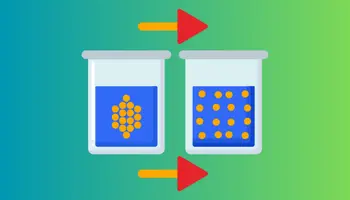
What AI Image Generator Is E...
Last updated 1 month ago

How to Make an AI Image Gene...
Last updated 1 month ago
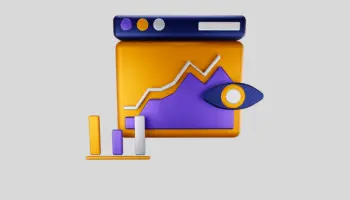
What is the Best Free AI Ima...
Last updated 1 month ago

How to Use the Bing AI Image...
Last updated 1 month ago
.webp)
Understanding the Evolution...
Last updated 1 month ago

Leveraging the Power of AI f...
Last updated 1 month ago
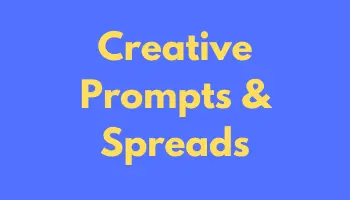
Level Up Your Bullet Journal...
Last updated 1 month ago
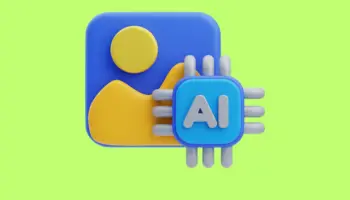
Design Inspiration: Eye-Catc...
Last updated 1 month ago
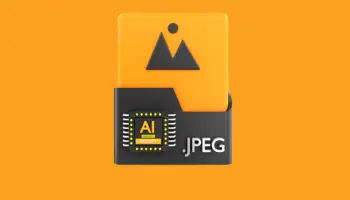
Unleash Your Inner Foodie: D...
Last updated 1 month ago

ASMR Prompts for Relaxation...
Last updated 1 month ago







